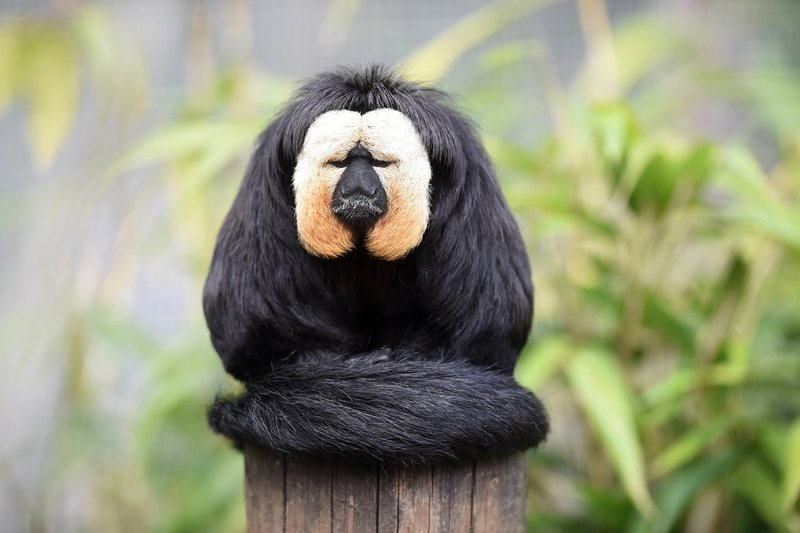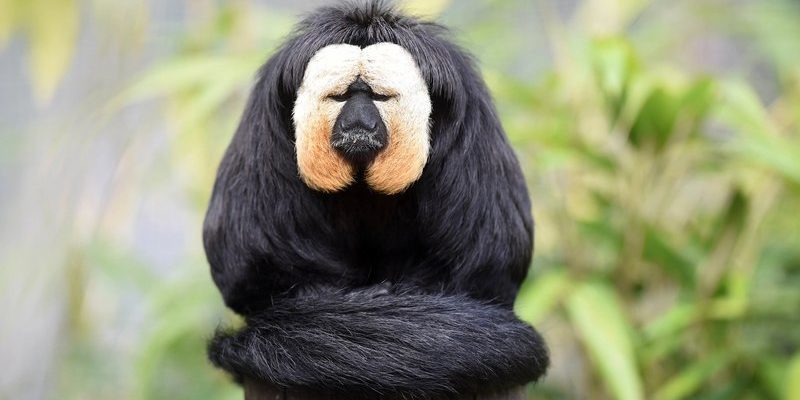
Saki monkeys belong to the Pitheciidae family and can be found in the lush rainforests of South America. They come in various species, each with its unique personality and behavior. Have you ever seen a monkey figure out a puzzle or remember where it hid its food? That’s part of the Saki monkey’s charm! Their intelligence is evident in their playful behavior and social interactions, which makes them a joy to observe.
Now, let’s dive deeper into the world of Saki monkeys and explore their cognitive abilities and behaviors. Understanding how smart these creatures are can provide us with a better appreciation for their place in the animal kingdom.
Understanding Saki Monkey Intelligence
When we talk about a monkey’s intelligence, we’re often referring to how well they can solve problems, communicate, and adapt to their environment. Saki monkeys have shown remarkable skills in these areas. They use their dexterous hands to manipulate objects and can even open locks to retrieve food, which is quite impressive for a creature of their size!
Saki monkeys have a strong memory, which is crucial for their survival in the wild. They often hide food to eat later, and they remember where they’ve tucked their snacks away. It’s like having a secret stash of goodies! This ability to remember locations helps them thrive in their natural habitats, where food can be scarce.
Another aspect of their intelligence is their social structure. Saki monkeys are highly social animals, living in small family groups. They communicate through a variety of vocalizations, body language, and even facial expressions. This complex interaction indicates a level of social intelligence often seen in more advanced primates.
Social Behavior of Saki Monkeys
In the wild, Saki monkeys are typically found in groups consisting of a few adults and their young. This social structure is essential for several reasons. First, it provides safety in numbers. When a group forages together, they’re less vulnerable to predators.
Moreover, these monkeys form strong bonds with each other. They groom one another, which is not only a way to keep clean but also reinforces social ties. Grooming helps to establish and maintain relationships, which can be crucial for cooperation when facing threats or finding food.
Saki monkeys also display a range of playful behaviors. You might catch them swinging from branches, chasing one another, or engaging in gentle wrestling matches. These activities aren’t just for fun; they help young monkeys develop social skills and learn how to interact with their peers. Play is a vital part of learning for many species, and Saki monkeys are no exception.
Problem-Solving Skills of Saki Monkeys
When it comes to problem-solving, Saki monkeys have shown that they can be quite clever. In various studies, researchers have presented these monkeys with challenges that require innovative thinking to obtain food. For example, they might need to figure out how to retrieve a piece of fruit that’s cleverly hidden inside a puzzle box.
What’s fascinating is how they approach these tasks. Saki monkeys often exhibit trial-and-error learning, where they try different methods until they succeed. This shows that they are capable of understanding cause-and-effect relationships. This kind of problem-solving ability is a hallmark of intelligent beings in the animal kingdom.
Additionally, Saki monkeys can learn from each other. If one monkey figures out how to open a container, others in the group might watch and learn from that experience. This sharing of knowledge highlights their social intelligence and ability to adapt to new challenges in their environment.
The Role of Adaptability in Saki Monkey Intelligence
Adaptability is another critical factor in the intelligence of Saki monkeys. In the fluctuating environments of the rainforests they inhabit, these monkeys must constantly adjust their behavior to survive. For instance, when food sources become scarce during dry seasons, Saki monkeys can switch their diets to include different fruits or insects.
This flexibility in diet is crucial for survival. It shows that they can assess their surroundings and make necessary changes based on what’s available. Their resourcefulness is a testament to their cognitive abilities, proving they are not just creatures of habit.
Furthermore, Saki monkeys have been observed using their environment creatively. For instance, they might use tools like sticks to extract insects from tree bark. This ability to utilize tools is often associated with higher intelligence in the animal kingdom, making the Saki monkey a fascinating subject of study.
Comparing Saki Monkeys to Other Primate Species
When discussing intelligence in primates, it’s interesting to compare species. While Saki monkeys are clever, they are often overshadowed by more renowned primates like chimpanzees or orangutans. Chimpanzees, for example, are known for their advanced problem-solving skills and use of tools. However, Saki monkeys hold their own in their unique ways.
For instance, while chimpanzees may rely heavily on social hierarchies, Saki monkeys exhibit a more egalitarian social structure. Their intelligence manifests differently, focusing more on adaptability and social bonding. Each species has developed distinct types of smarts suited to their environments and lifestyles.
Another comparison can be made with capuchin monkeys, often celebrated for their intelligence. Capuchins are quick learners and great mimics. While Saki monkeys might not mimic as readily, their long-term memory and food-hiding strategies show a different aspect of intelligence that’s equally impressive.
The Importance of Protecting Saki Monkeys
Given their intelligence and unique behaviors, it’s essential to consider the conservation of Saki monkeys. Their habitats—rich rainforests—are increasingly threatened by deforestation and human encroachment. As these environments shrink, we risk losing not just the Saki monkeys but also the complex ecosystems they inhabit.
Protecting Saki monkeys means preserving their natural habitats and fostering awareness about the importance of biodiversity. Zoos and wildlife organizations also play a crucial role by educating the public and supporting conservation efforts. By appreciating their intelligence and unique behaviors, we can advocate for their protection.
Supporting conservation efforts can take many forms. Whether it’s donating to wildlife organizations or simply sharing knowledge about these incredible creatures, every action counts. Remember, protecting Saki monkeys ensures they continue to thrive in the wild and teach us about the wonders of animal intelligence.
So, how smart is a Saki monkey? They certainly have a reputation for cleverness! From their impressive problem-solving skills to their intricate social behaviors, these monkeys display a unique intelligence that deserves our admiration. By understanding their cognitive abilities and behaviors, we gain a deeper appreciation for their role in the ecosystem.
As we continue to learn more about these fascinating creatures, let’s also consider our impact on their lives and habitats. Protecting Saki monkeys and their environment is not just about conserving a species; it’s about preserving the rich tapestry of life on our planet. Every Saki monkey has a story, and it’s up to us to ensure they thrive for generations to come.

